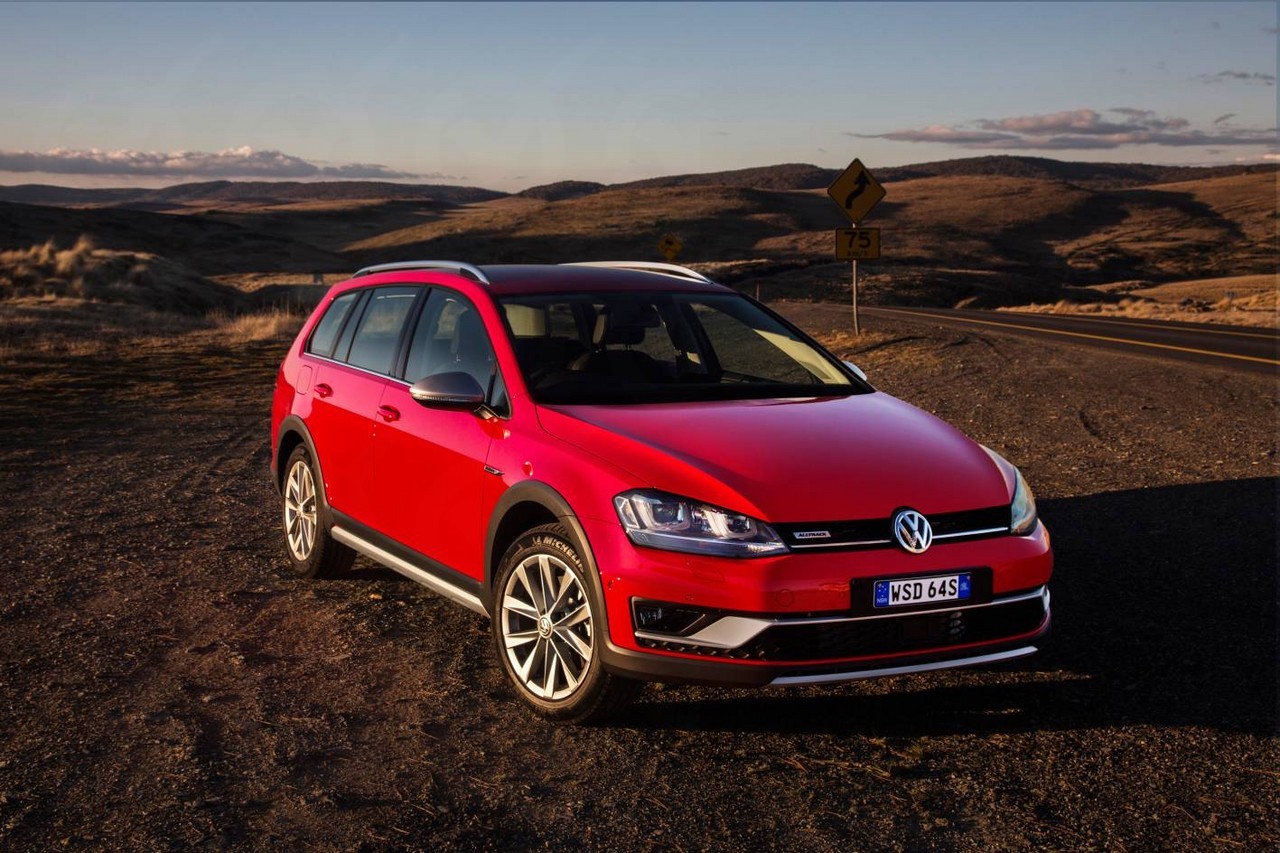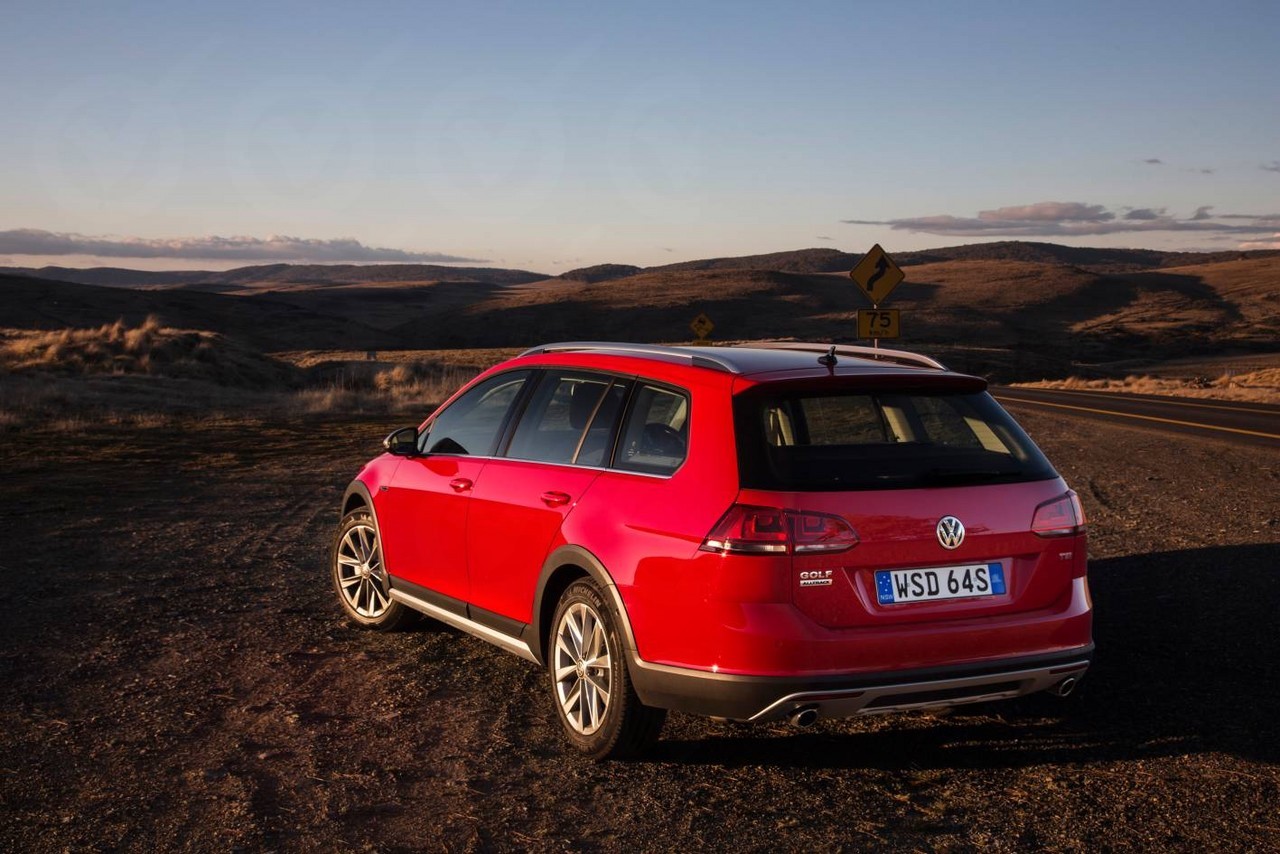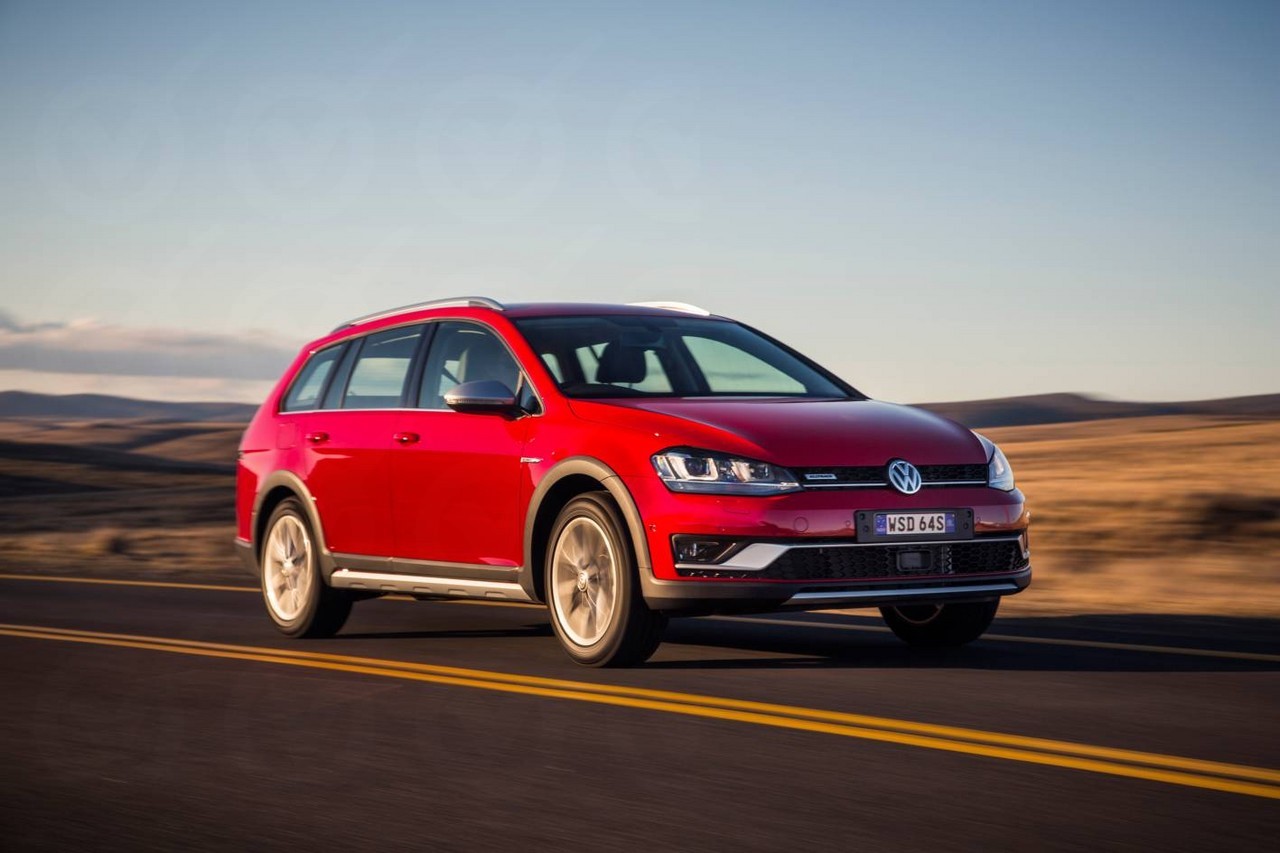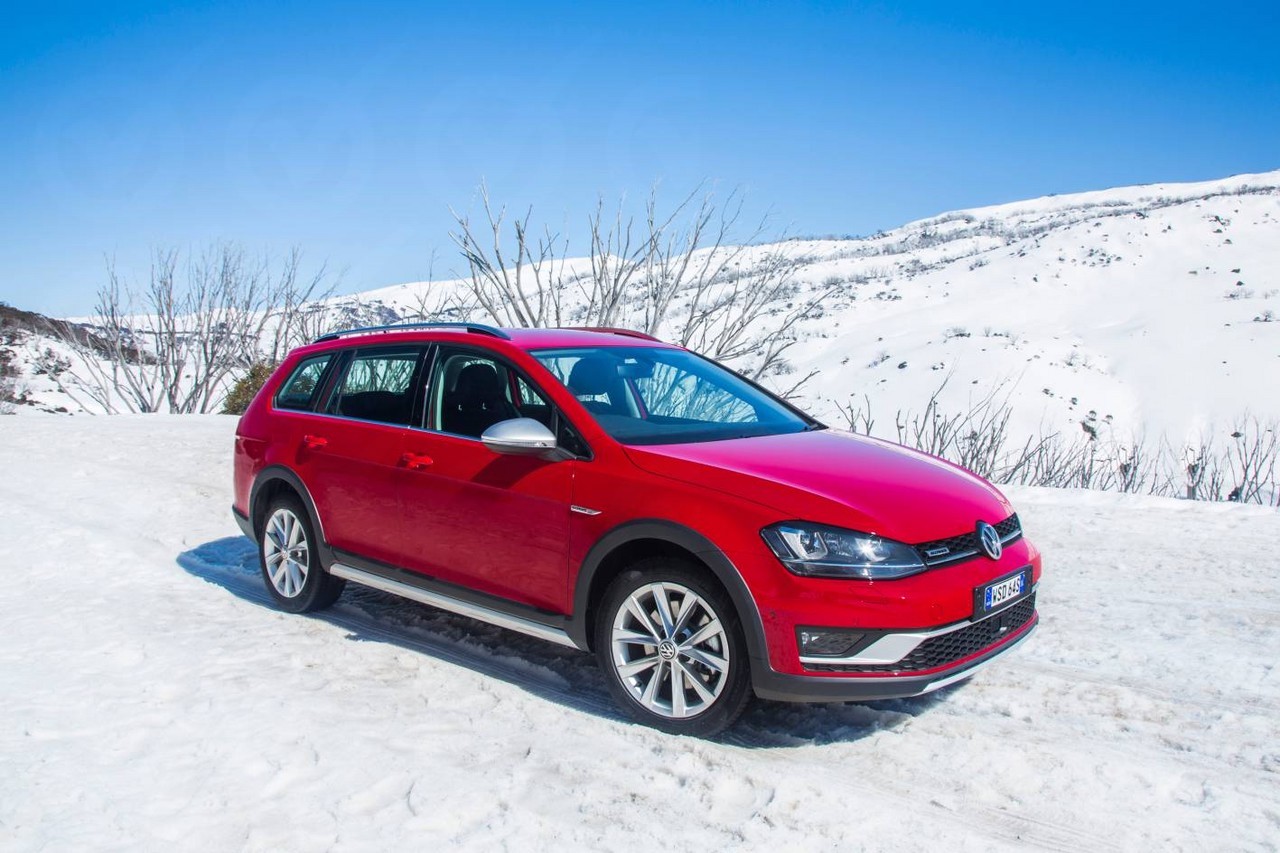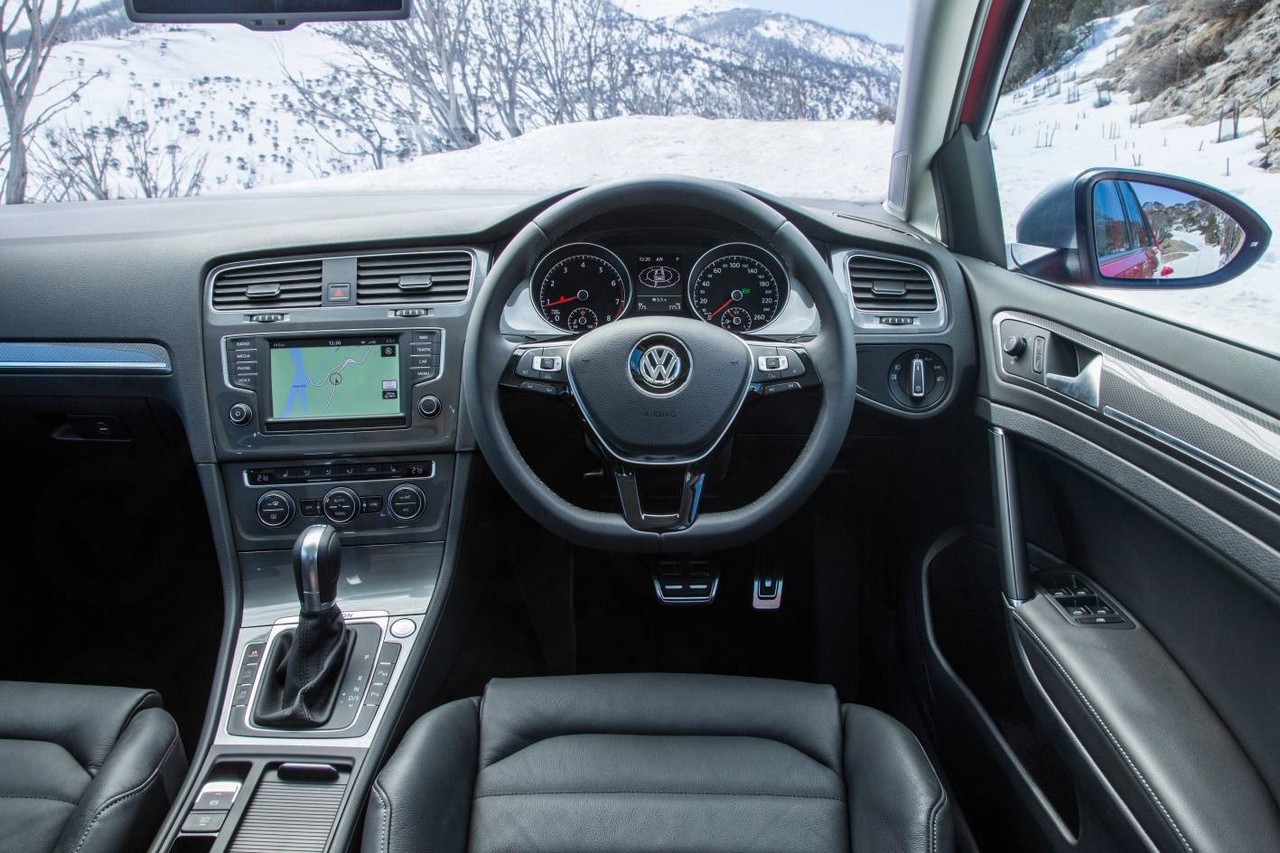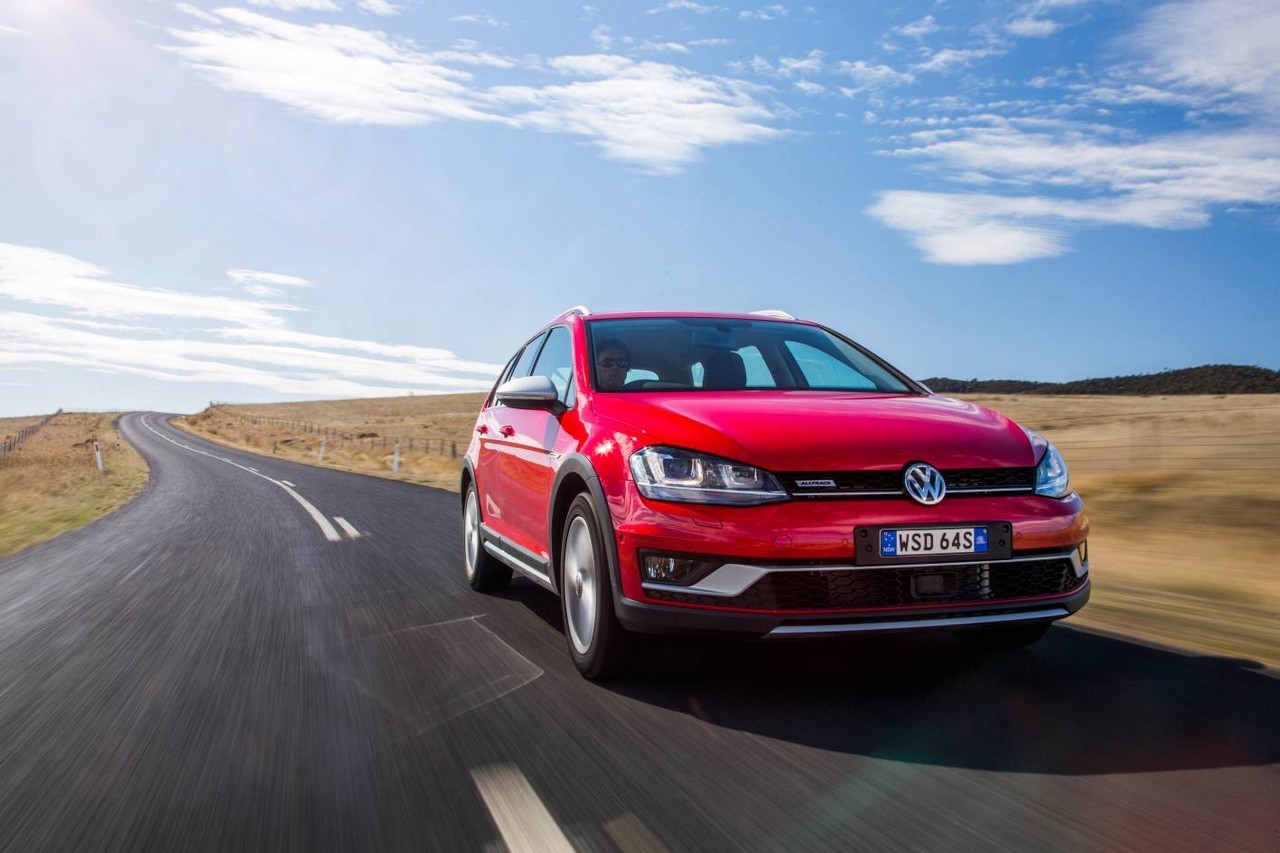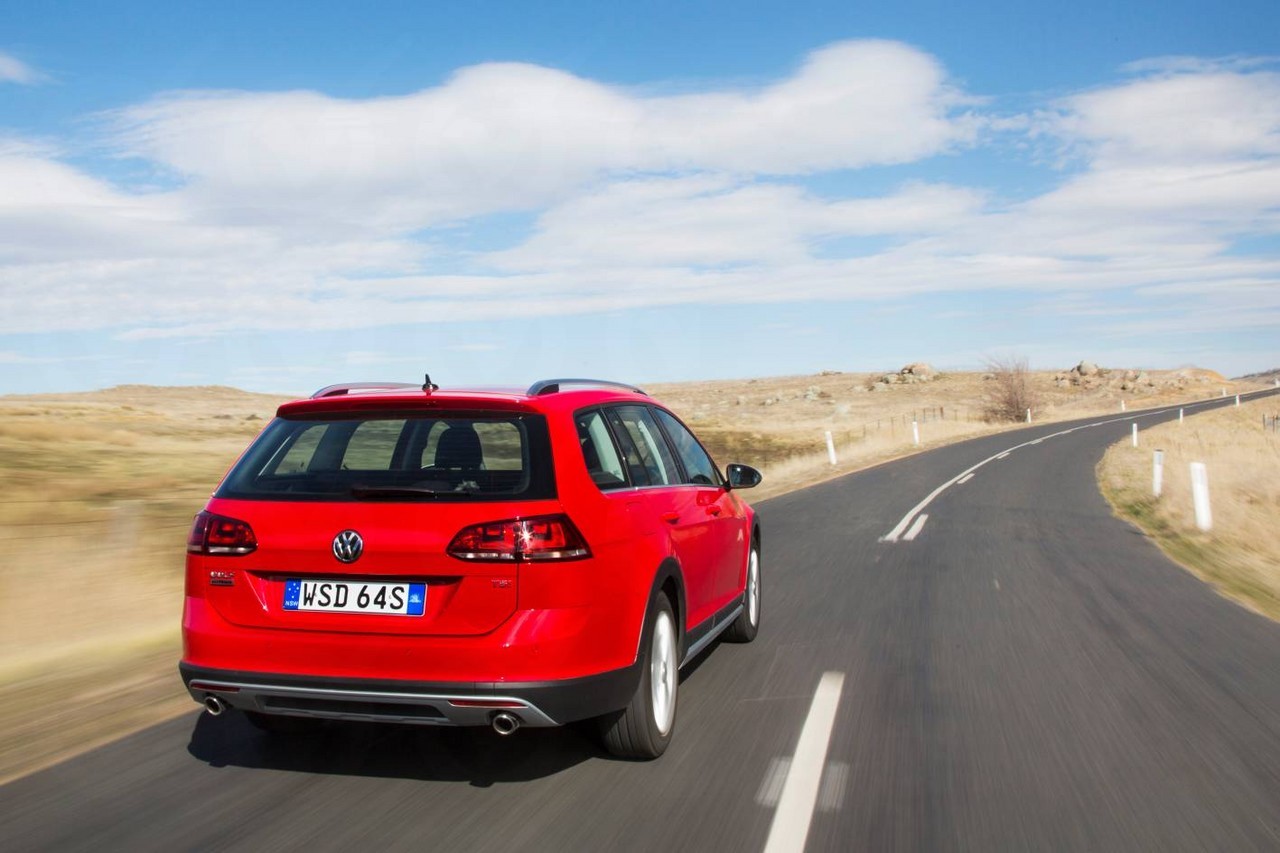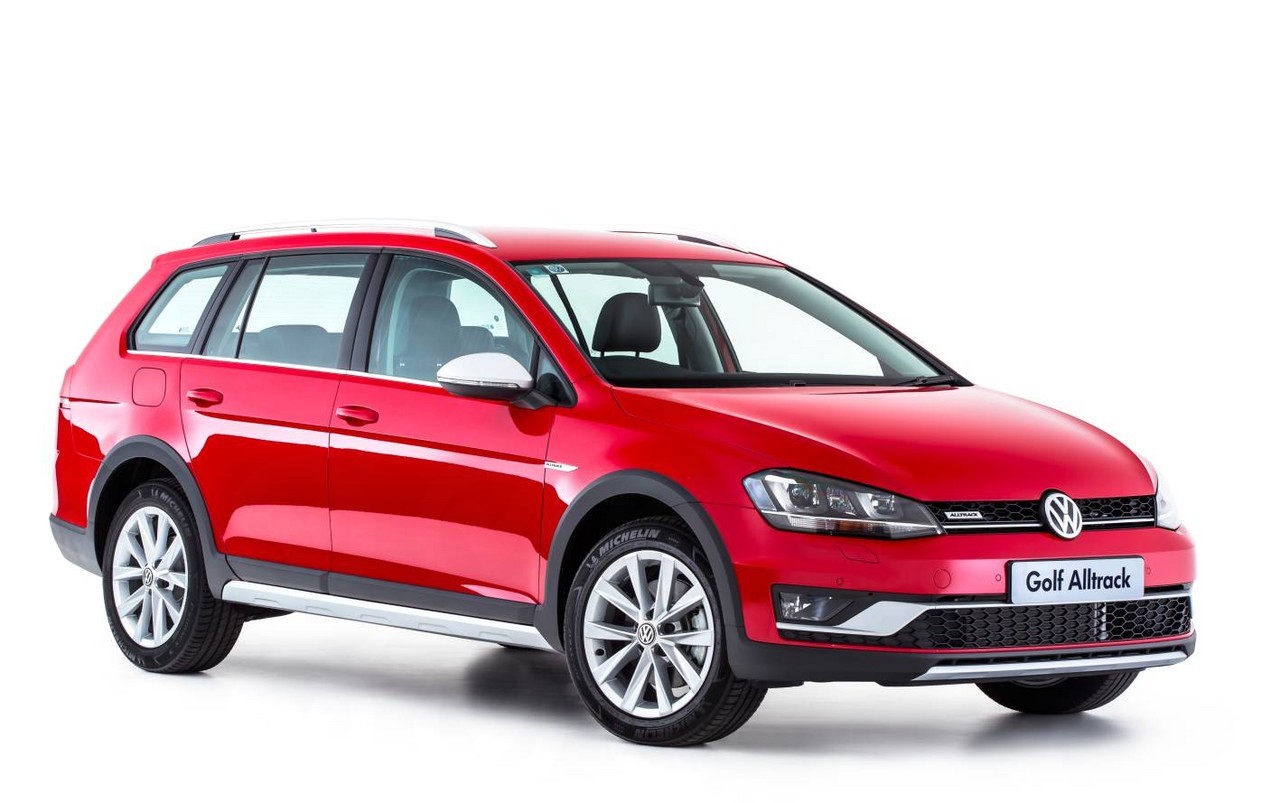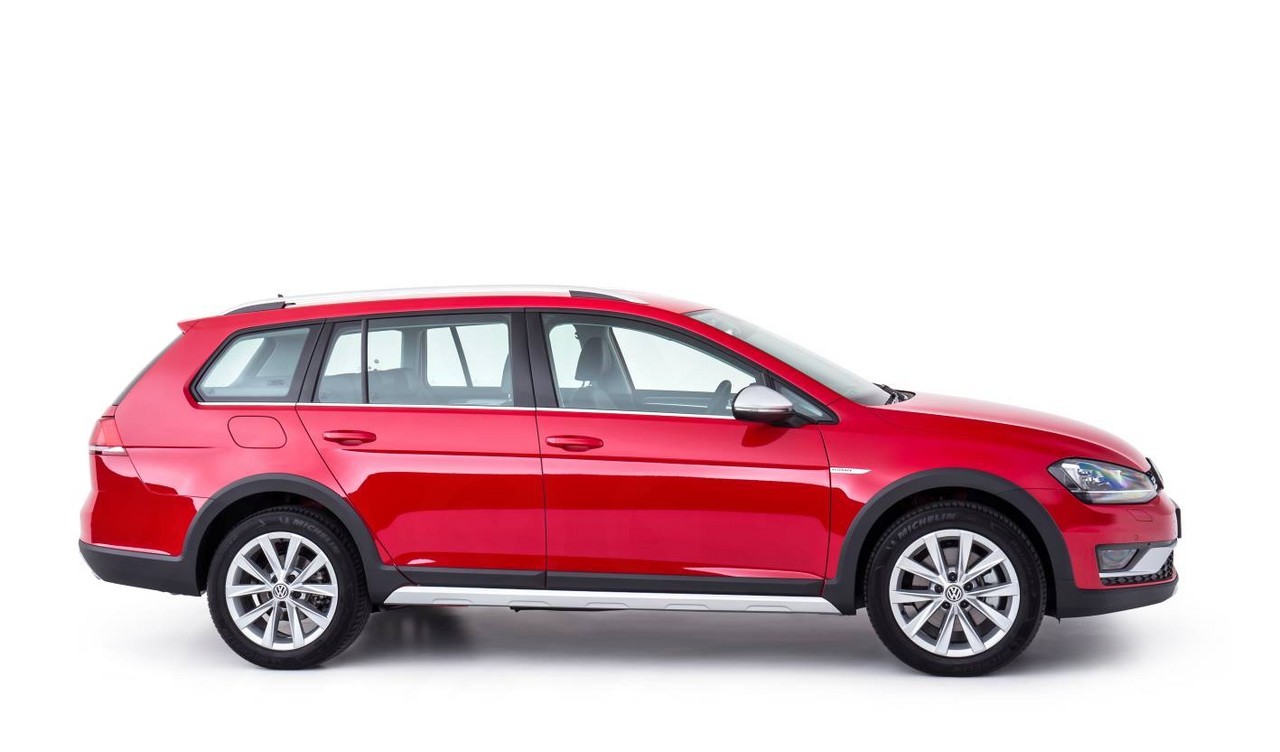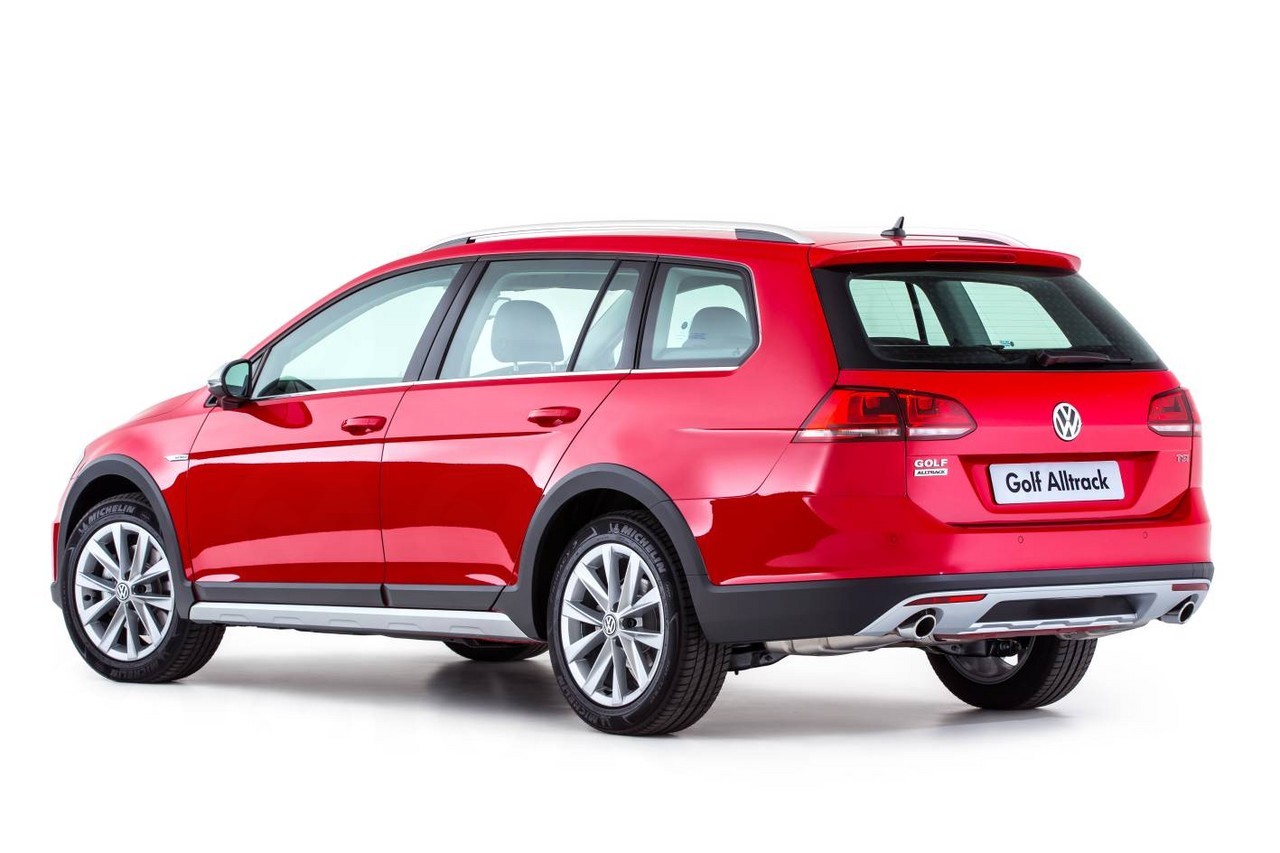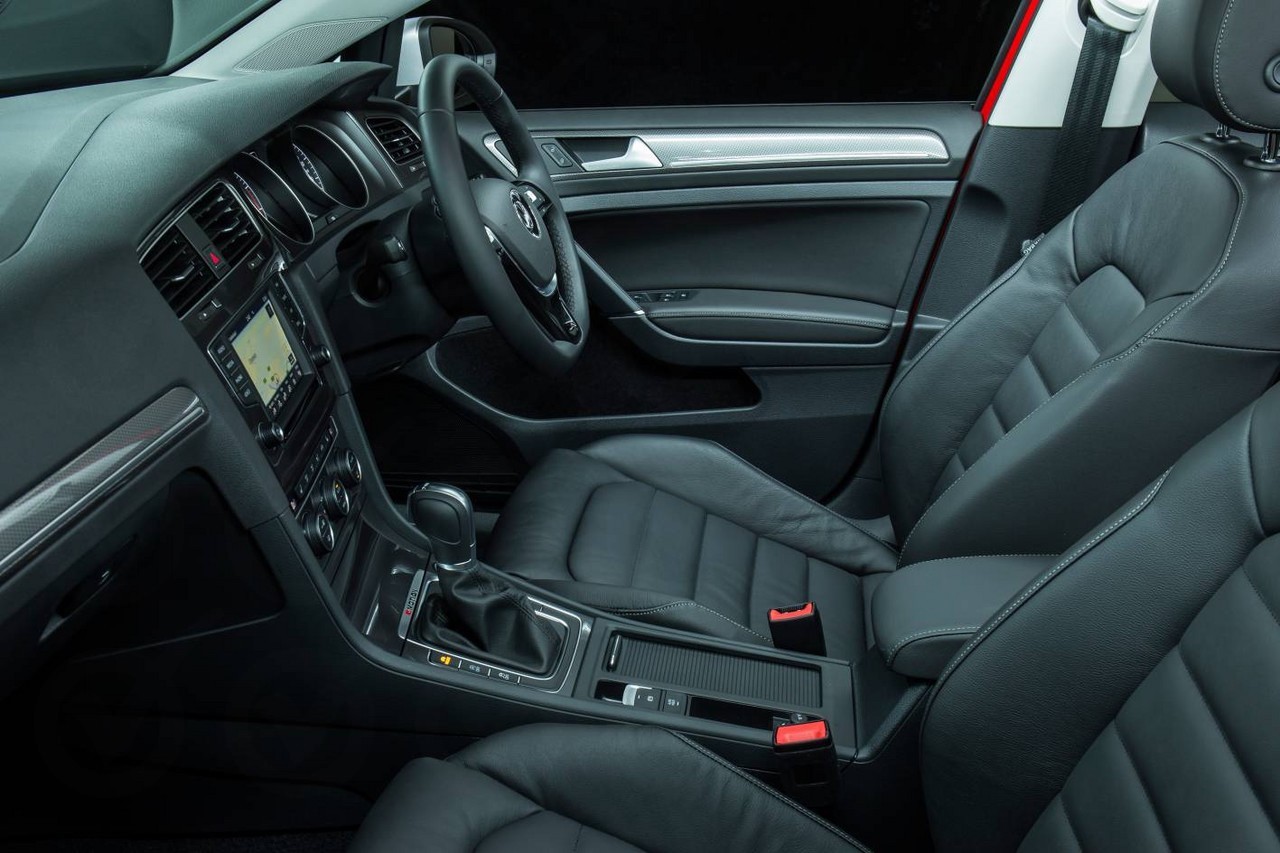
- Responsive 1.8-litre turbo petrol engine
- Impressive ride/handling balance
- Supportive front seats
- High standard of interior fit and finish
- Haldex all-wheel drive system and space-saver spare tyre not suited to off-road use
- Start/stop system and DCT conspire against consistent acceleration from rest
- Tyre noise
- Price premium to VW Mk.7 Golf Wagon
Overview
Released in Australia in September 2015, the Volkswagen Mk.7 Golf Alltrack was a five-door wagon. Manufactured in Germany, the all-wheel drive VW Golf Alltrack was powered by a 1.8-litre turbocharged petrol engine that was mated to a six-speed double clutch transmission.
132TSI engine
A member of Volkswagen’s EA888 engine family, the 1.8-litre ‘132TSI’ turbocharged petrol engine had a grey cast iron block, a cast aluminium alloy cylinder head, direct injection (Fuel Stratified Injection, or ‘FSI’), a die-forged steel crankshaft, BorgWarner K03 water-cooled turbocharger, an intercooler, double overhead camshafts (chain-driven), roller finger cam followers, four valves per cylinder, variable intake valve timing, a variable length intake manifold and a compression ratio of 9.6:1.
To minimise fuel consumption, the Golf Alltrack’s 132TSI engine had a start/stop function. Over the combined ADR 81/02 test cycle, fuel consumption for the Golf Alltrack 132TSI was 6.7 litres per 100 km. The Golf Alltrack 132TSI required 95 RON premium unleaded petrol (PULP).
| Variant | Engine | Trans. | Peak power | Peak torque |
|---|---|---|---|---|
| 132TSI | 1.8-litre turbo petrol I4 | 6sp DCT | 132 kW at 4500 rpm | 280 Nm at 1350-4500 rpm |
4Motion all-wheel drive system
The Volkswagen Golf Alltrack had a fifth generation Haldex (‘Haldex GenV’) coupling which utilised a wet multi-plate clutch. Since operation of the coupling was independent of the front and rear axle speeds, full locking torque could be applied at any given time and speed via an electrical pump that compresses the disc package. When coasting or with low engine loads, the clutch could disengage to direct all of the engine’s torque to the front axle and minimise fuel consumption. In high slip conditions, however, the clutch could engage to direct up to 50 per cent of the engine’s torque to the rear axle (i.e. a 50:50 front:rear torque split).
For the Golf Alltrack, both the front and rear axles were fitted with electronic differential locks that could brake a spinning wheel to transfer torque to the opposing wheel on that axle.
Dimensions
Compared to the related VW Mk.7 Golf Wagon , the Golf Alltrack was 79 mm shorter (at 4578 mm), 61 mm wider (1860 mm), 19 mm taller (1515 mm) and had a 10 mm longer wheelbase (2630 mm); ground clearance was 175 mm. Inside, cargo capacity was 605 litres (VDA method), though this increased to 1620 litres when the rear seats are folded.
Steering and suspension
The Volkswagen Golf Alltrack had electromechanical, power-assisted steering and a turning circle of 10.9 metres. Underpinned by Volkswagen’s MQB platform, the Golf Alltrack had MacPherson strut front suspension with lower A-arms and independent, four-link rear suspension with coil springs.
Safety equipment
Standard safety equipment for the Volkswagen Golf Alltrack included dual front airbags, front side airbags, a driver’s knee airbag, full-length curtain airbags, ABS, electronic brake force distribution, brake assist, electronic stability control, traction control and front seatbelts with pretensioners and load limiters.
Like the Mk.7 Golf Wagon , the Golf Alltrack was also fitted with:
- Fatigue Detection: monitored driver behavior at speeds in excess of 65 km/h for signs of fatigue. If the driver exhibited signs of fatigue, a tone would sound and a warning would appear in the multi-function display; and,
- Multi-collision brake: automatically braked the vehicle after a collision to reduce kinetic energy and minimise the likelihood of a second impact.
Driver Assistance Package
Available as an extra-cost option, the ‘Driver Assistance Package’ included:
- Adaptive Cruise Control (ACC): using a radar sensor, ACC could autonomously apply the vehicle’s brakes to maintain a preset distance to vehicle ahead. ACC could also cause the vehicle to accelerate to its pre-set speed after braking;
- Front Assist: Front Assist used a radar sensor to detect if the vehicle was closing too fast on the vehicle ahead. If this occurred, Front Assist would
- provide audible and visual warnings to the driver,
- bring the brake pads into contact with the brake discs for an emergency stop; and,
- automatically apply the brakes to warn the driver.
If the driver failed to respond, Front Assist would apply the brakes automatically to avoid or reduce the severity a collision.
- City Emergency Brake (City EB): at speeds below 30 km/h, City EB would monitor the road ahead for vehicles. If a collision was considered likely, City EB would prime the brakes and increase braking assistance. If the driver did not react and a collision was imminent, City EB would autonomously initiate emergency braking; and,
- Proactive occupant protection system: in a potential accident situation, the seatbelts would be tensioned and windows closed
Features: Golf Alltrack 132TSI
Standard features for the Volkswagen Golf Alltrack included 17-inch ‘Valley’ alloy wheels with 205/55 R17 tyres and a space-saving spare wheel, Volkswagen’s ‘Dicover Media’ satellite navigation system with a 6.5-inch colour touchscreen, SD card slots and App-Connect USB interface (for Apple CarPlay, Android Auto and MirrorLink), an eight speaker sound system with CD player, MP3/WMA/AAC compatibility, Bluetooth mobile phone connectivity and audio streaming, ‘Comfort’ front seats with individual heating, ‘Vienna’ leather upholstery, dual-zone climate control air conditioning, cruise control, bi-xenon headlights, directional front fog lights, daytime LED driving lights, a rear fog lamp, front and rear parking sensors, rear view camera with static guidelines and distance to obstacles (Volkswagen’s ‘Optical Parking System’ or OPS), automatic headlights, rain-sensing wipers, 60/40 split and folding rear seats, a leather-wrapped steering wheel and gearshift knob, remote central locking with proximity key (i.e. keyless entry), power windows, power adjustable and heated mirrors, automatic tilting of the passenger side mirror on reverse, tilt and telescopic steering wheel adjustment, height adjustable front seats, push-button start, LED ambient lighting, illuminated vanity mirrors, removable cargo cover, stainless steel door sills, two 12 volt power sockets, chrome roof rails, tyre pressure monitoring, a trip computer and an immobiliser.
Sports Luxury Package
Available as an extra-cost option, the ‘Sports Luxury Package’ added 18-inch ‘Canyon’ alloy wheels with 225/45 R18 tyres, steering wheel gearshifts paddles, a power-operated panoramic glass sunroof and dark tinted rear side and rear windows (i.e. privacy glass).
Specifications
